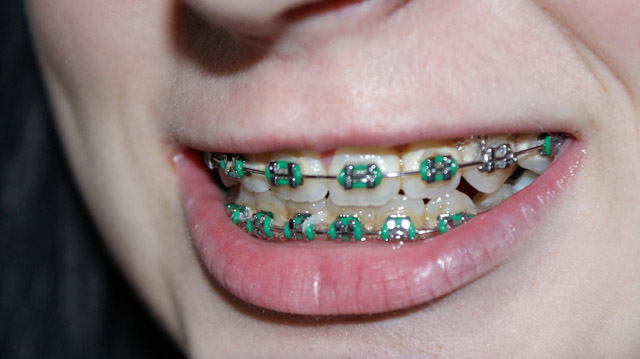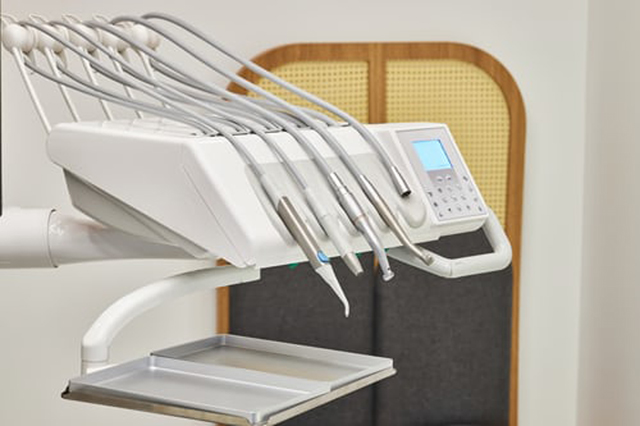Like adults, kids, too, need to visit the dentist regularly. As a parent, when a child is growing up, you may notice several aspects of the child’s teeth development. The problem can be more profound after the kids lose their baby teeth. Taking the child to their regular dentist will help determine if there is a problem that requires a specialist. An orthodontist is a dentist with specialty training in straightening and teeth alignment. Dental braces are form of treatment to correct alignment and put pressure on teeth, moving them to a straighter position. If a child has the following problems, their dentists refer them to an orthodontist.

Orthodontic problems:
- Underbite: the lower jaw is too big while the upper jaw is too small
- Overbite: the upper jaw is too big while the lower jaw is too small.
- Too much spacing of the teeth
- Early, late or irregular loss of primary teeth
- Thumb or finger sucking
- Extra or a missing tooth
- Protruding teeth
- Crooked teeth
- Difficulty in chewing
- Jaw growth problems
- Mouth breathing
Every child is unique and has their own way of development; however, some of these problems are hereditary. It can also be a special, inborn problem or caused by accident. The age of 7 is the most appropriate for a child to visit an orthodontist for such problems; however, some parents opt to do so earlier or later.
Early bracing
Crooked and unattractive teeth in the child can be one of the reasons to get dental braces earlier. Such problems can cost them bullying in social gatherings that can cause psychological harm to the child. Most children are not self-conscious at this age, but some are. Parents, in the interests of their children’s feelings, opt to have such problems treated earlier. Moreover, issues such as Class III malocclusion, for example, an underbite, necessitate early treatment. The opportunity window is below the age of 10 when it is possible to alter the teeth’ irregular growth. It’s also most parents’ concern that such problems should not extend to their children’s teenage period, hence prefer early treatment.
Records indicate that most parents who opt to start their child treatment early to get dental braces, have kids with Class I malocclusion problems such as protruding, crooked, and crowded teeth. When this happens, the child has to undergo 2 stages of treatment. The first stage is in the early stages before the child loses their primary teeth. This is known as the interceptive approach. At this phase, they use dental appliances, not necessarily braces.
When a child undergoes the first stage, the second stage is shorter than usual; this is where the child has dental braces put on their teeth. This method has, however, raised concerns among several orthodontists. Profitt, a professor at The University of M. Carolina’s School of Dentistry in Chapel Hill, states that this method is costly due to the regular visits to the dentist. It also increases the burden of treatment with no benefit for most Children. It takes a longer time than usual, fixing the teeth, and they all lead to the same end results. He stated there is no advantage to starting early unless it’s a Class III malocclusion problem or the doctor advises so.
Traditional bracing practice
At the age of 7–14 years, the child has lost most of their baby teeth and grown most of their permanent teeth. At this point, it is the best time to consider dental braces for the child. The child’s teeth are still developing, and preventive care is necessary to guide the desired outcome of the teeth alignment. If the child has any of these orthodontist problems, schedule an appointment with the orthodontist. They examine the child’s teeth, ask several questions, and take X-rays to check on the severity of the issue. This will guide the doctor on the next treatment plan. The doctor will guide you, as the parent from the start and throughout the process. They will also advice on the best time to put dental braces on your child. To figure out the appropriate age, talk to the orthodontist, depending on the severity of the case, they will guide on the treatment process and bracing.
Robert Bray, president of the American Association of Orthodontist, states that a regular dentist can offer orthodontic treatment. It is important to note that orthodontists have an additional 2-3 years to learn how to structure the teeth properly.
The braces
Most kids’ dental braces require brackets, wires, and rubber bands. Tightening of the wire bit by bit is essential during the check ups and can cause mouth discomfort. This may subject the child to certain food restrictions that can interfere with this treatment process. They should avoid popcorn, sticky candy, hard foods, and sugary snacks and drinks as they may interfere with the bracing treatment. If it is not urgent, there is no need to subject the child to this treatment below the age of 7. To make installation of dental braces more exciting, the kid can opt to choose a rubber band of their choice from the colorful selection. Accompany the child to the dentist for regular check-ups. The treatment takes 2-3 years, and before teenagehood, the child can smile confidently, which boosts their self-esteem.
Schedule an Appointment
Error: Contact form not found.




